To celebrate Marilyn Monroe’s birthday, on Saturday, June 1, Cinespia.org will present “Some Like It Hot” (1959, Billy Wilder) at Hollywood Forever Cemetery. Though the film is considered one of Tinseltown’s all-time best comedies, Marilyn reportedly objected to the fact that her character, Sugar Kane, actually believed her fellow musicians (Tony Curtis and Jack Lemon dressed in drag) were women. No girl is that dumb, she said. Nevertheless, the movie was a hit and her performance is unforgettable. You can read Mike Wilmington’s review here.
More Burt on the big screen at UCLA’s Billy Wilder Theater
The Billy Wilder Theater at UCLA will present a choice double bill on Sunday, June 2, at 7 p.m.: two film-noir titles starring Burt Lancaster. First is the prison drama “Brute Force” (1947, Jules Dassin), in which Lancaster plays an angry inmate desperate to escape his sadistic captors.
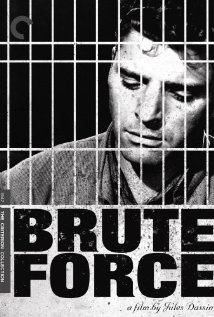 Variety’s review of “Brute Force” noted that “Yvonne De Carlo, Ann Blyth, Ella Raines and Anita Colby are the women on the ‘outside’ whose machinations, wiles or charms accounted for their men being on the ‘inside.’ ” Natch. (Lancaster and De Carlo were paired again in 1949’s “Criss Cross,” directed by Robert Siodmak.)
Variety’s review of “Brute Force” noted that “Yvonne De Carlo, Ann Blyth, Ella Raines and Anita Colby are the women on the ‘outside’ whose machinations, wiles or charms accounted for their men being on the ‘inside.’ ” Natch. (Lancaster and De Carlo were paired again in 1949’s “Criss Cross,” directed by Robert Siodmak.)
“Brute Force” will be followed by “Kiss the Blood Off My Hands” (1948, Norman Foster). Lancaster plays a traumatized and violent ex-prisoner of war living in London and trying, unsuccessfully of course, to get his life together. Co-starring Joan Fontaine.
The evening is part of the Lancaster centennial celebration presented by the UCLA Film & Television Archive and the Hugh M. Hefner Classic American Film Program. The celebration of Lancaster’s movies runs through June 30. Author Kate Buford is the special guest on June 2.
Additionally, on Monday, June 3, at 7:30 p.m., the Archive’s look at emerging voices in Czech cinema comes to a close with director David Ondříček in person for his taut neo-noir police thriller, “In the Shadow” (2012), which was the Czech Republic’s official Oscar entry for 2013.
Happy birthday, Carey Mulligan!
On Memorial Day: Good wishes, gratitude to our veterans
Today I was thinking about the Hollywood Canteen, the club that entertained servicemen during World War II. What a feat of dedication and coordination! More than 3,000 stars as well as industry staff from producers to prop masters volunteered their talent, time and effort. A uniform served as a ticket for admission; food, non-alcoholic drinks, shows and dancing were free of charge.
Housed at 1451 Cahuenga Blvd., the Canteen was typically open six nights a week and was in operation from Oct. 3, 1942 to Nov. 22, 1945. Key to the venue’s formation and success were Bette Davis, John Garfield and Jules Stein (Davis’ agent).
You can read more about the Hollywood Canteen here.
Film noir gets a Hawaiian punch Saturday at the Egyptian
New York, Los Angeles, San Francisco, Chicago … these are the cities we usually associate with the grim, glamorous tales of film noir.
But when you get the rare chance to see a noir with a more exotic setting, it’s all the more memorable. The American Cinematheque is offering just such a viewing opp when it goes tiki on Saturday, June 1.
The Egyptian Theatre in Hollywood is showing “Hell’s Half Acre” (1954, John Auer), which was filmed in filmed in Honolulu. Evelyn Keyes stars as a dancer combing the streets of Honolulu’s red-light district to hunt for her missing G.I. husband (Wendell Corey), who she believes is alive and writing songs in Hawaii.
Turns out, he’s also a gangster vying with Philip Ahn for control of the island’s vice rackets. Toss sultry, statuesque Marie Windsor into the mix, and it’s pulp nirvana, says the Cinematheque.
The party starts at 5 p.m. in the Egyptian’s courtyard, where there will performances from King Kukulele & the Friki Tikis and the Polynesian Paradise Dancers, tiki vendors and a cash bar with Polynesian drinks. A slide show and a 50th anniversary tribute to the Disney’s Enchanted Tiki Room by Bob Baker’s Marionettes will precede the 7:30 p.m. screening.
‘The Boudoir Bible’ author Betony Vernon shares secrets of sacred sexual pleasure
In her headshot by Ali Mahdavi, author Betony Vernon holds a come-hither gaze worthy of an Old Master courtesan. No girl next door is she – flame-red tresses frame alabaster skin, voluptuous cheekbones and pouty lips. Her dark fingernails drape over her ear; a lush green tattoo wraps around her shoulder. She is sultry and severe, alluring and mysterious.
In person, however, this modern-day femme fatale – more precisely a jet-setting jewelry designer as well as a writer/sex educator – is equal parts elegant and down to earth. We are in a back room at Bookmarc in West Hollywood, moments before the signing party for her book, “The Boudoir Bible: The Uninhibited Sex Guide for Today” (Rizzoli, $35).
I got the feeling she slipped into her fuchsia cocktail dress and Louboutins as easily as she might throw on a favorite pair of jeans. Her pale-pink back-seam tights are from a shop she loves in London. It was in London that Vernon started her educational sex salons in November 2002. She felt compelled to teach after retail buyers rejected her fine erotic jewelry collection in late 2001. The snub was a sign that there was a vast need for knowledge, among the fashion elite and everyday people alike.
Vernon is friendly and approachable, green eyes playfully glinting, lashes fluttering as she makes a point. Other times her words are punctuated with an easy laugh as fizzy as the champagne she is sipping. I can picture her growing up in the mountains of Tazewell, Va., in the ’70s, then heading to Florence to launch her design career.
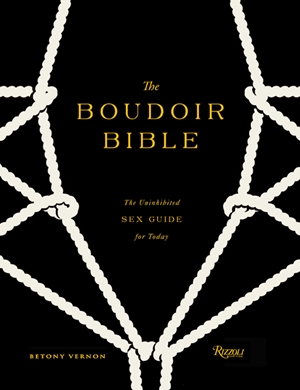 I’m curious about the fact that “The Boudoir Bible” is dedicated to her mother and father who, she says, made her extraordinary life possible. Says Vernon: “I grew up with very little parental guidance. I was sort of a free agent. Sometimes absence has a greater impact than presence.”
I’m curious about the fact that “The Boudoir Bible” is dedicated to her mother and father who, she says, made her extraordinary life possible. Says Vernon: “I grew up with very little parental guidance. I was sort of a free agent. Sometimes absence has a greater impact than presence.”
While we live in a sex-sells society, that doesn’t mean we are truly liberated, much less enlightened, Vernon believes. Where there are hook-ups, there are hang-ups, along with taboos, repression and fear. “We’re in a country where billions of dollars are made through porn,” she says. “Sex is very accessible but pleasure’s really not.”
Vernon recommends taking a holistic approach to sexual pleasure. For starters, she suggests setting aside time to experience a sacred sexual ceremony. In her book, she explains as follows: “By creating a ritualized context for sexual exploration, extending the duration of the time of the sexual encounter, and engaging the entire body as a sexual whole, the ceremony aims to broaden the horizons of pleasure beyond that which may be experienced through ‘normal’ everyday sex.”
Or as she put it during our chat: “Fast sex is a killer.”
The beautifully laid out book (with illustrations by François Berthoud) covers basics, such as anatomy and hygiene, as well as more risqué topics such as bondage, flagellation, role playing, restraints and cutting-edge sex toys.
Also central to satisfaction: empathy and communication. “There’s still the belief that a woman’s pleasure is very much like a man’s. It’s not. People tend to consider the act a performance and make orgasm their only goal. Goal-oriented is really dangerous. It’s better if you let go and not use a script.”
Speaking of scripts, Vernon possesses a healthy irreverence for the language we use to broach the subject of sex. She has banned words such as guilty pleasure, dirty and naughty from her vocabulary. And, for those playing the field, she doesn’t like the word single. “It signals alone when in fact you could be multiple.”
Happy (film noir) Mother’s Day, everyone!
Baz Luhrmann and Catherine Martin create a gorgeously over-the-top Gatsby for the new millennium
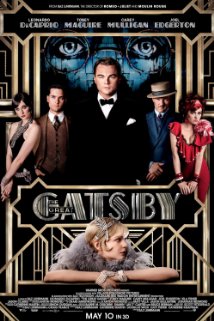 The Great Gatsby/2013/Warner Bros. Pictures/143 min.
The Great Gatsby/2013/Warner Bros. Pictures/143 min.
By Michael Wilmington
Director Baz Luhrmann’s razzle-dazzle, ultra-snazzy movie of novelist F. Scott Fitzgerald’s Jazz Age masterpiece, “The Great Gatsby” – which has been unjustly trashed by a number of critics – is a sometimes sensational movie that may not match the aesthetic brilliance and roaring ’20s allure of the book. (How could it? )
But it gives us plenty to enjoy anyway: a great story, much of Fitzgerald’s matchlessly lyrical narration and memorable dialogue, and a strong cast. Leonardo DiCaprio makes one of the best Gatsbys possible in a part that now seems perfect for him. Tobey Maguire plays Nick Caraway, Carey Mulligan is Daisy Buchanan and Joel Edgerton is her husband Tom.
There’s also a truly spectacular visual realization – by Luhrmann and his wife, Catherine Martin, who is the film’s production and costume designer – set in a dreamy fabrication of 1922 Long Island and Manhattan (actually shot in Luhrmann’s and Martin’s native Australia) that knocks your eyes out again and again.
This is Luhrmann’s (and Martin’s) Gatsby, as much as Fitzgerald’s: a romantic musical Gatsby, a hip-hop Gatsby, a gorgeously over-the-top Gatsby for the new millennium. But Luhrmann so obviously loves and admires the book that it becomes not only a beautiful movie and the best Gatsby film adaptation of the several made so far (1926’s with Warner Baxter, 1949’s with Alan Ladd, and 1974’s with Robert Redford), but, for me, one of the best movies of the year so far. It’s also a picture that deserves far more appreciation than it’s getting from a lot of my colleagues.
“The Great Gatsby” opens today.
Doc taps the typewriter’s mighty impact, enduring appeal
 As a retro-obsessed scribe, I often dream of steno pads, fountain pens and carbon copies. (Think “Mad Men” or Tippi Hedren’s office job in “Marnie.”) And of course I recall the marvelous clack, smack and ding of a vintage Smith Corona.
As a retro-obsessed scribe, I often dream of steno pads, fountain pens and carbon copies. (Think “Mad Men” or Tippi Hedren’s office job in “Marnie.”) And of course I recall the marvelous clack, smack and ding of a vintage Smith Corona.
I am not alone in my nostalgia. Turns out, the good old-fashioned typewriter is experiencing a revival of popularity with users young and old. Just ask director Christopher Lockett and producer Gary Nicholson. Their documentary, “The Typewriter in the 21st Century,” opens in Los Angeles on Friday.
Inspired by a 2010 Wired magazine story called “Meet The Last Generation of Typewriter Repairman,” Lockett and Nicholson interviewed more than 30 typewriter devotees – writers, collectors, journalists, teachers, students, artists, inventors and repair men and women.
Among these old-school loyalists are non-fiction authors Robert Caro and David McCullough, who between them claim four Pulitzer Prizes, three National Book Awards and a Presidential Medal of Freedom. For Caro and McCullough (he has been writing on the same machine since 1965), the thoughtfulness and precision that a typewriter demands is integral to the writing and editing process.
And perhaps the creative process. It stands to reason that typewriters might have influenced the way literary heavyweights wrote, back in the day when a wordsmith might form a visceral connection with keys, carriage and ribbon. The film shows us machines once owned by the likes of Ernest Hemingway, Jack Kerouac, Tennessee Williams, John Steinbeck, Jack London, Sylvia Plath, George Bernard Shaw, John Updike, Ray Bradbury and Ernie Pyle. Certainly, all the great film noir novelists and screenwriters composed on typewriters.
The filmmakers also explore the history (typewriters with a QWERTY keyboard date from 1873) and societal impact of these trusty devices. It’s easy to forget in our contemporary plugged-in cocoons, but typewriters changed the landscape of the business world. “The typewriter is the one piece of office technology that allowed women to move from the home to the professional work force,” says author Lynn Peril.
Whether drafting a work of art or just embracing a low-tech lifestyle, the connection to these machine endures. Singer-songwriter Marian Call uses a typewriter as a percussion instrument. “Nothing else makes that sound,” she says. “And it brings with it a flood of memories.”
Soldiers Peter Meijer and Alan Beck sent typewritten letters from the front lines in Afghanistan and Iraq. As Meijer put it: “One woman I sent letters to, when I visited her on leave, carried those letters around with her in her purse. You don’t get that with email.”
“The Typewriter in the 21st Century” runs May 10-16 at the Downtown Independent, 251 S. Main St., 213-617-1033. On May 10, the filmmakers will hold a Q&A between the 8 p.m. and 10 p.m. screenings.
Arthur Lyons Film Noir Festival in Palm Springs kicks off with ‘Three Strangers,’ a cynical tale of a trio bonded by fate
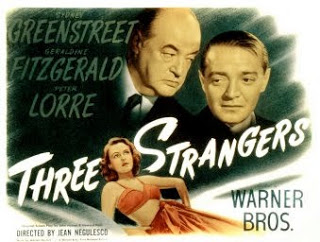 “Three Strangers” (1946, Jean Negulesco) will open the Arthur Lyons Film Noir Festival in Palm Springs on Thursday, May 16. The fest, which runs through Sunday, May 19, will close with “The Asphalt Jungle” (1950, John Huston); a total of 12 films is scheduled. The lineup is a mix of landmark and obscure vintage movies from the classic film noir era.
“Three Strangers” (1946, Jean Negulesco) will open the Arthur Lyons Film Noir Festival in Palm Springs on Thursday, May 16. The fest, which runs through Sunday, May 19, will close with “The Asphalt Jungle” (1950, John Huston); a total of 12 films is scheduled. The lineup is a mix of landmark and obscure vintage movies from the classic film noir era.
Negulesco’s “Three Strangers” tells the cynical tale of a trio bonded by fate and a winning lottery ticket: Sydney Greenstreet, Peter Lorre and Geraldine Fitzgerald star. To read more about this film, I recommend this piece by my friend, writer/producer Barry Grey.
In addition to the screenings, the festival will include special guests and receptions. Ticket and festival information are available online or by calling 760-325-6565. Producer and host Alan K. Rode will be there to introduce films and make sure everyone is having a dark and decadent good time. Having attended in 2011, I can highly recommend this fest.
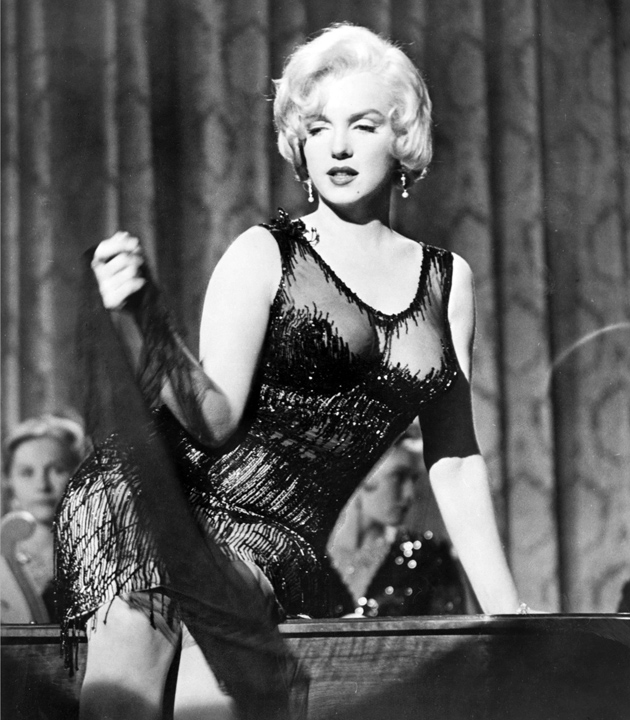





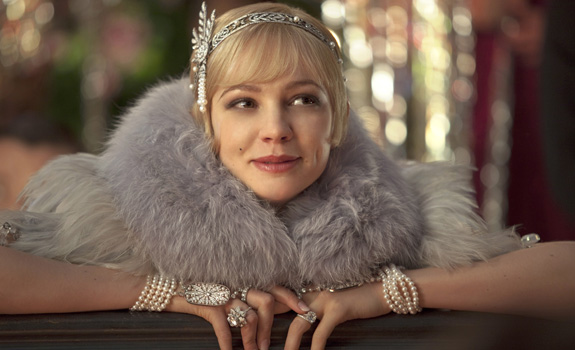
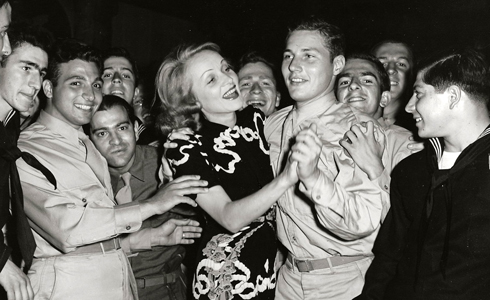

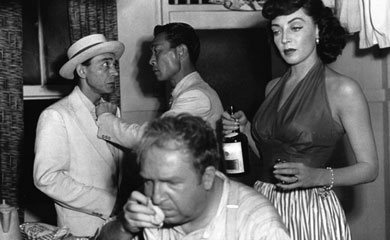


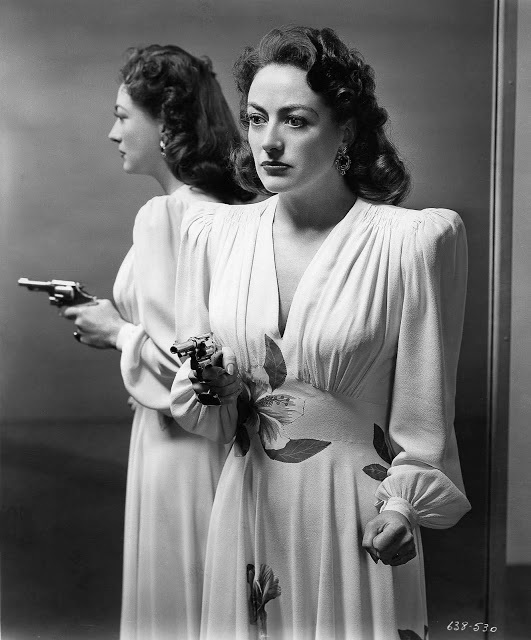
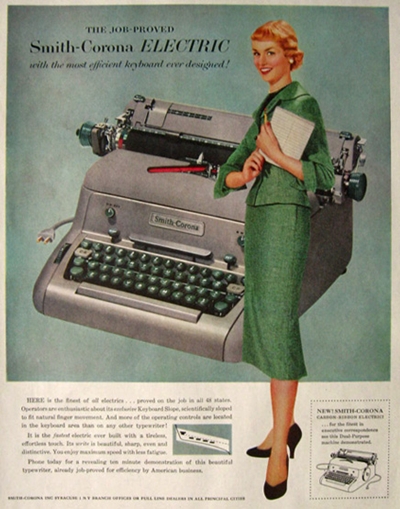





From FNB readers